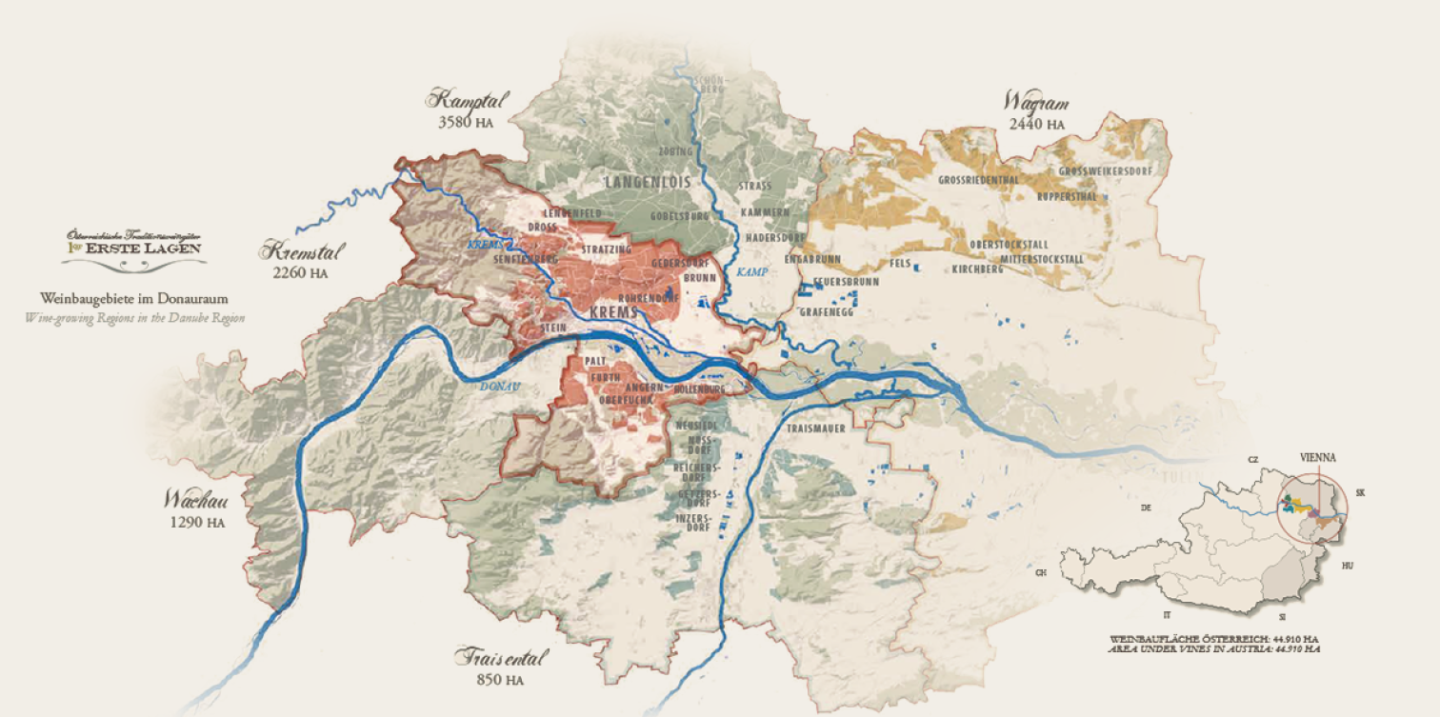Your cart is currently empty!

The Kremstal has a long history of viticulture dating back to the Celts. The Romans optimized winemaking over the centuries, and written records of viticulture exist from around 470 AD through the Vita of Saint Severin. During the Migration Period, winemaking came to a standstill but experienced a significant revival in the 8th century due to foundations established by monasteries from Bavaria and Salzburg.
The narrow Danube Valley widens to the east, and the landscape on the southern side of the Danube changes to gentle hills and large high terraces. They consist of mighty layers of loess, partly covering glacial gravel conglomerate or overlay the foothills of the Bohemian granite and gneiss highlands, continuing in the Dunkelsteiner Forest like the well known Goettweiger Berg with its mighty monastery on top.
Due to its highly favorable climatic location, the Kremstal wine region offers ideal conditions for characterful, elegant white wines as well as fruitdriven, velvety red wines. Cool fallingwinds from the north, alternating with warming Pannonian influences from the east, create a unique climatic framework, regulated by the Danube.
The transition from warm days to cool nights provides optimal ripening conditions for the grapes and contributes to the characteristic cool climate aromas found in the wines of this region — fruitdriven, elegant with freshness and finesse.
